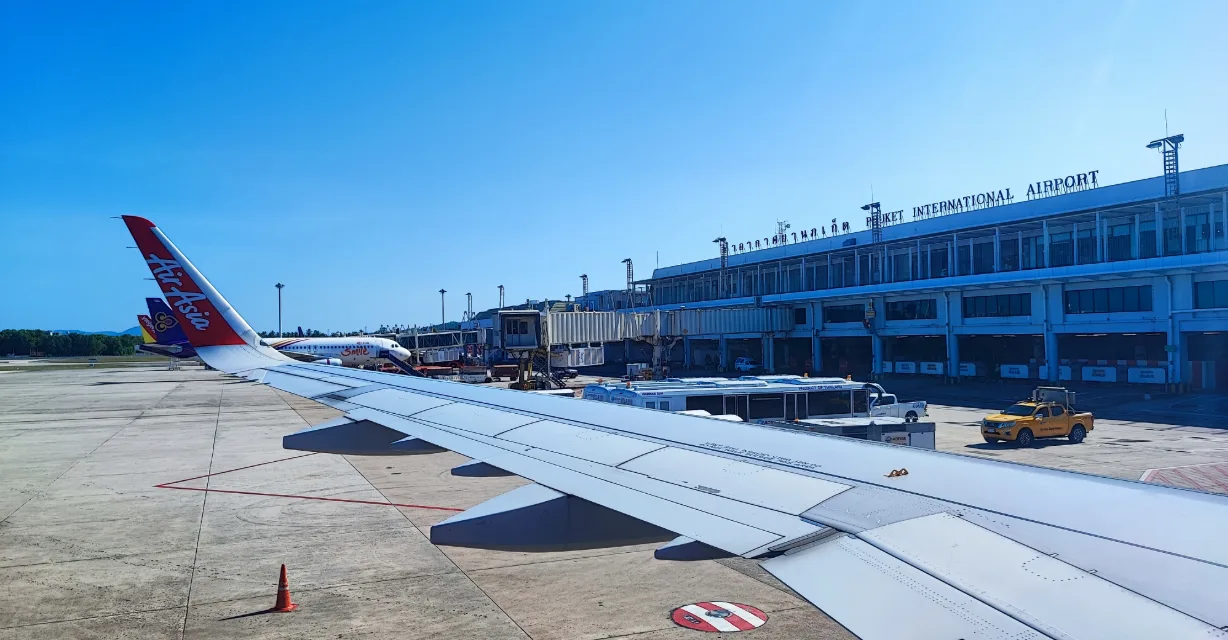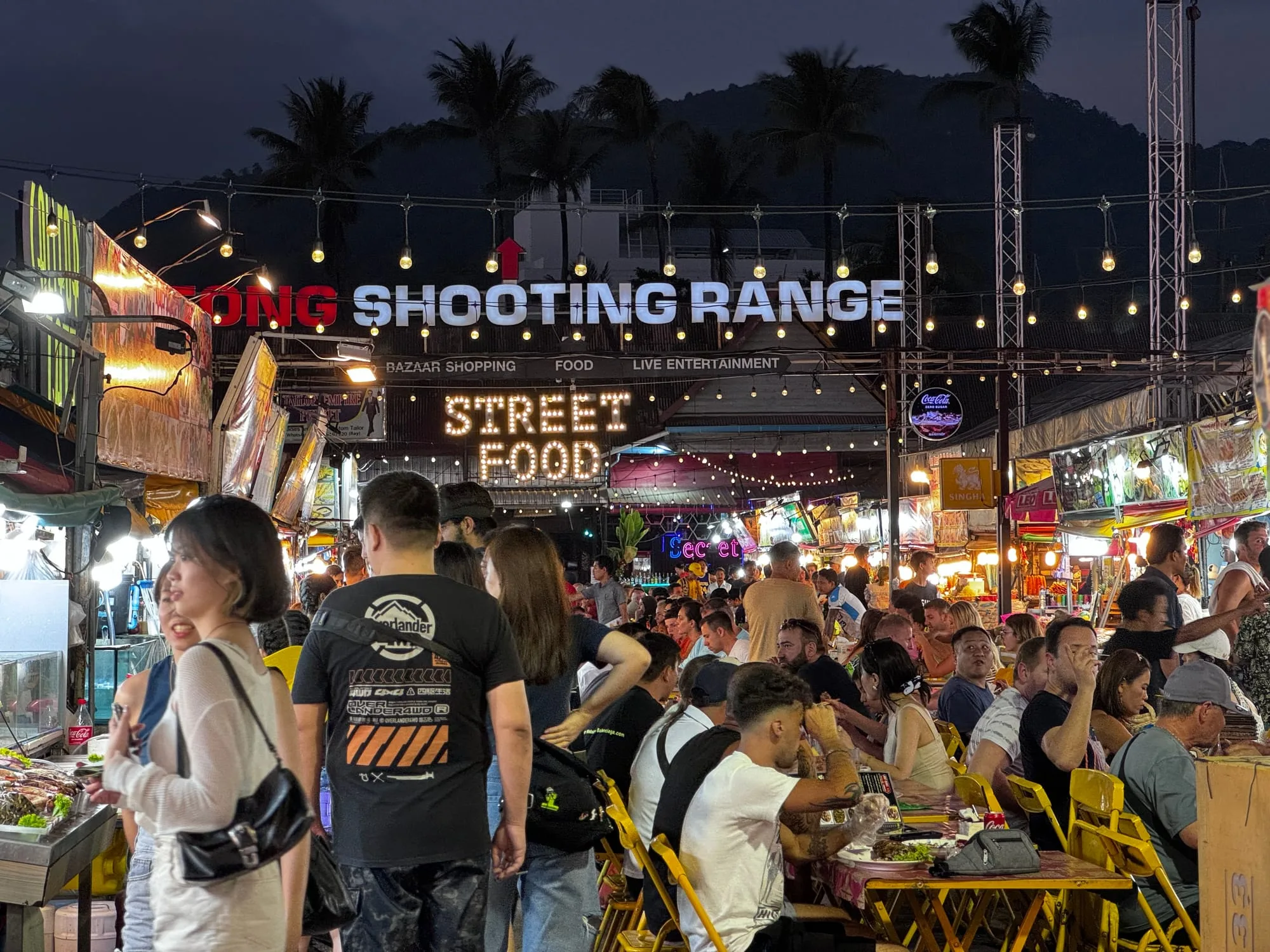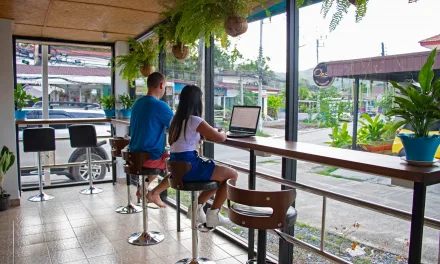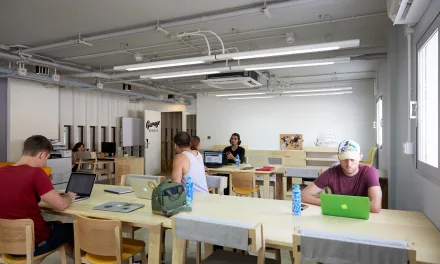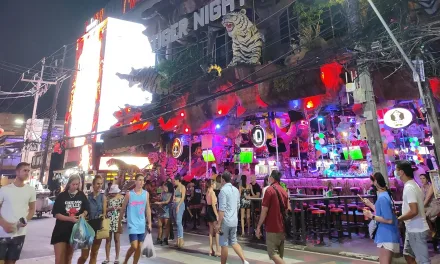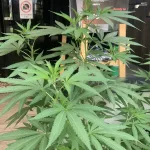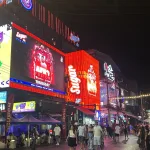Phuket tourism is booming in 2025, with arrivals and revenues reaching near-record highs. Yet many local business owners still feel left behind. This article explores why street vendors, taxi drivers, and small shops are struggling despite record spending, breaking down where the money really flows, how tourist demographics have shifted, and what entrepreneurs need to do to adapt in a changing market.
Table of Contents
Walk into almost any café or bar in Phuket and you’ll hear the same conversation. “Tourist numbers are down. Nobody is spending like before.” It’s become almost a chorus among business owners and locals.
Street vendors in Patong talk about quieter nights, while family-run shops in Rawai and Chalong worry that visitors just browse without buying. Even taxi drivers complain that tourists haggle harder and tip less. At the same time, hotels and beach clubs are posting record revenues.
When you step back from the chatter and look at the hard numbers, the picture is not so simple. Arrivals are close to record highs, and overall revenue is higher than before the pandemic. So why does it feel like the opposite on the ground?
Is Phuket really facing a downturn, or is the story more about how tourists are spending and where that money is going?
The Big Picture – Phuket Tourism by the Numbers
Visitor Arrivals (2023–2025 vs. 2019)
Phuket saw a strong return of tourists last year, with 8.65 million international arrivals in 2024—a 23 percent jump from 2023 and just 5 percent shy of the pre-pandemic high of 9.07 million in 2019 (Knight Frank, C9 Hotelworks).
Early 2025 is already looking healthy—3.89 million visitors arrived in the first quarter, generating about 149 billion baht in revenue (Thai Times).
This trajectory puts Phuket very much on the path to matching or even surpassing full-year 2019 arrivals, assuming trends continue.
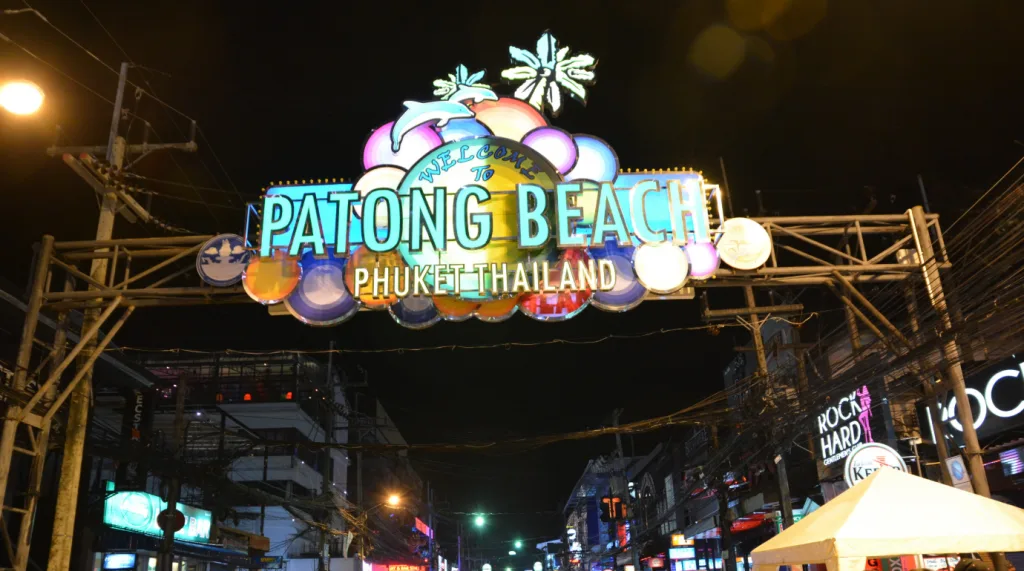
Tourism Revenue (2024 record and early 2025 performance)
In 2024, Phuket led the nation as the highest-earning province, pulling in an eye-popping 497.5 billion baht in tourism revenue (Thailand PRD).
Fast forward to 2025, and the island is already seeing healthy returns—3.89 million visitors brought in 149 billion baht in just the first quarter (Thai Times).
That pace suggests we’re on track for another high-impact year in tourism income.
Airport Traffic Near Pre-Pandemic Levels
Phuket International Airport handled 10.57 million international passengers in 2024, nearly matching the 10.67 million from 2019 (Tourismer.io, Wikipedia).
All told, total passenger movements (local and international combined) reached over 17 million in 2024 (Wikipedia), underscoring how much tourism traffic has bounced back.
Summary Table
The data is not always perfectly consistent across sources, but we’ve compiled the clearest figures available for a side-by-side comparison.
| Year / Period | Visitor Arrivals | Tourism Revenue | Airport Traffic (International) |
| 2019 (pre-COVID) | ~9.07 million | — (baseline for comparison) | 10.67 million passengers |
| 2023 | ~8.38 million | — | — |
| 2024 (full year) | ~8.65 million (95% of 2019) | 497.5 billion baht (record high) | 10.57 million passengers (99% of 2019) |
| Q1 2025 (Jan–Mar) | 3.89 million | 149 billion baht | — |
| First 5 months 2025 | 5.8 million | >220 billion baht | — |
Short Takeaway
Phuket’s tourism market has essentially recovered to pre-COVID strength. Arrivals are near record levels, revenue is at record highs, and airport activity is almost back to where it was in 2019.
Where Tourists Are Coming From
The profile of who comes to Phuket has shifted dramatically in recent years.
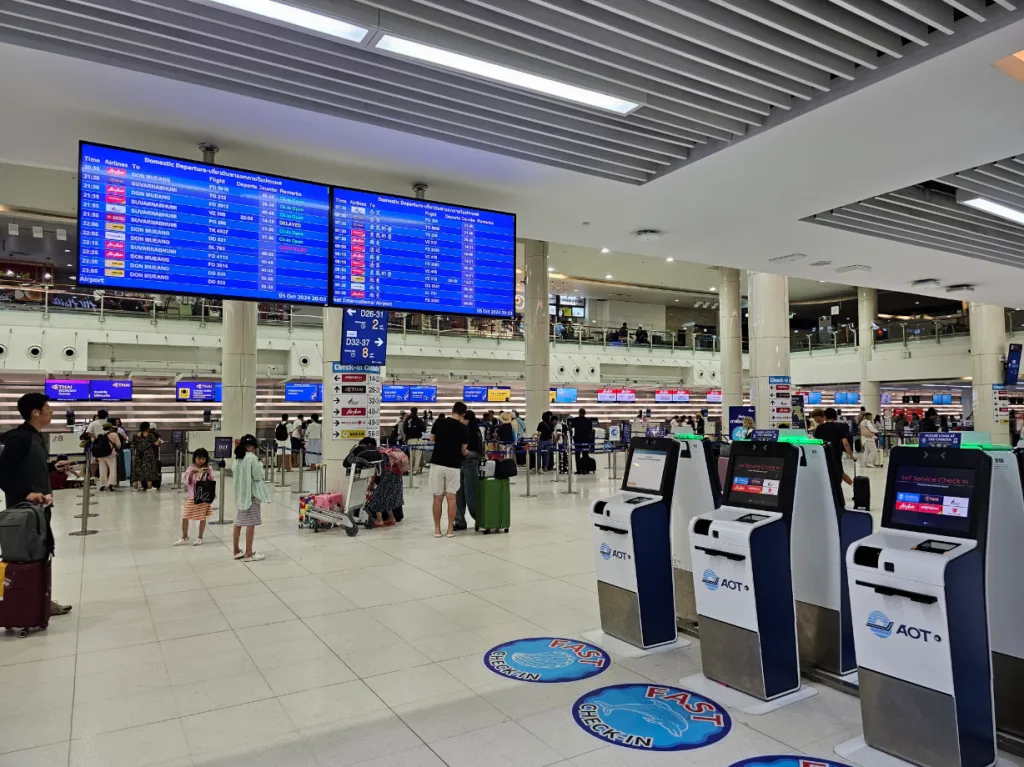
The Big Three Today: Russia, China, India
In 2024, the top three markets for Phuket were Russia, China, and India. Together they made up around 45 percent of all international arrivals (C9 Hotelworks).
- Russia led the pack, sending over 1 million visitors in 2024, a 26 percent rise from 2023. The strength of the Russian market is visible everywhere on the island—from language on menus to entire businesses now catering specifically to Russian clientele.
- China sent nearly 1 million visitors, up 76 percent year-on-year, but still well below the 3.1 million who came in 2019 before the pandemic.
- India has been the fastest riser, with nearly half a million visitors in 2024, a 58 percent increase. This is a market that barely registered in Phuket a decade ago, yet it is now one of the island’s strongest growth engines.
Other important contributors include Australia, Malaysia, and Europe, which remain steady feeders of tourists even if they no longer dominate the way they once did.
How the Market Has Changed Over Time
If you’ve lived in Phuket for more than a decade, you’ll remember a very different tourist mix. In the early 2000s, Phuket was still largely a European and Australian holiday destination, with heavy reliance on package tours and seasonal flights from the UK, Germany, and Scandinavia.
That balance has shifted dramatically. The rise of low-cost carriers, visa policies, and regional economic growth brought more Asian markets into the picture. The Chinese boom of the 2010s transformed Phuket’s tourism economy, particularly for shopping, tour groups, and budget to mid-market hotels.
Now, in the post-pandemic period, we are seeing another realignment. Russia has emerged as the dominant group, India has taken a permanent place in the top three, and businesses have sprung up to serve these markets in ways that simply didn’t exist a few years ago. It’s not just tourists adapting to Phuket, but Phuket adapting to its tourists.
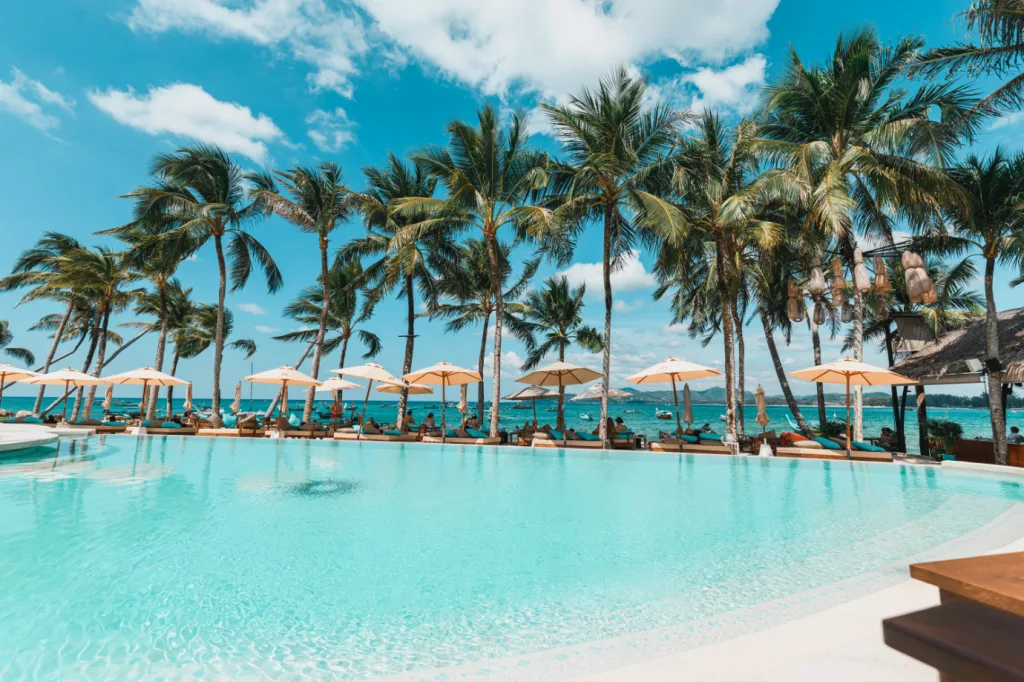
Why This Matters for Business Owners
For local businesses, these shifts aren’t just trivia—they shape what sells, what services are valued, and where the money flows.
- A Russian family on a long stay may spend differently than a European couple here for two weeks.
- Indian travelers often come in groups and increasingly seek high-quality dining and entertainment options.
- Chinese visitors, though fewer than before, still represent enormous potential if recovery continues.
Understanding who is actually coming to Phuket is key. Complaints about “low numbers” often miss the point—the tourists are here, but they are not the same as they were ten or twenty years ago.
The Spending Question – More or Less?
It’s tempting to believe the story that tourists are tightening their belts, but the island-wide numbers don’t back that up. In 2024 Phuket pulled in 497.5 billion baht in tourism revenue, the highest ever recorded, even though arrivals were still slightly below 2019 levels (Thailand PRD). That means the average visitor is spending more, not less.
Hotels provide the clearest evidence. In the first half of 2024, Phuket’s Average Daily Rate (ADR) was up 37% compared to 2019, with RevPAR up more than 30% (CBRE). Occupancy has nearly returned to pre-pandemic levels, showing that demand is strong even at higher prices.
The growth isn’t limited to hotels. Visitors are funnelling money into lifestyle products, curated experiences, and venues that market hype as much as service. Before COVID there wasn’t a single beach club in Kata or Karon. Today there are at least five. Where southern Phuket once struggled to offer more than basic coffee, now it’s lined with stylish brunch cafés. The “smashed avocado crowd” has arrived, and they’re willing to spend for the experience.
The overall picture is clear: tourists are spending more, but they’re doing it in different places than before.
Why Some Businesses Feel the Pinch
This shift explains why so many locals still feel like tourism is weaker. The spending hasn’t disappeared, but it’s redistributed—and not everyone benefits equally.
Uneven Recovery
Smaller operators that once thrived on volume are hurting. Street stalls, tuk-tuks, and mid-market shops depended heavily on lower-spend visitors, who aren’t driving today’s revenue growth. By contrast, hotels, beach clubs, and polished cafés are capturing more of the market.
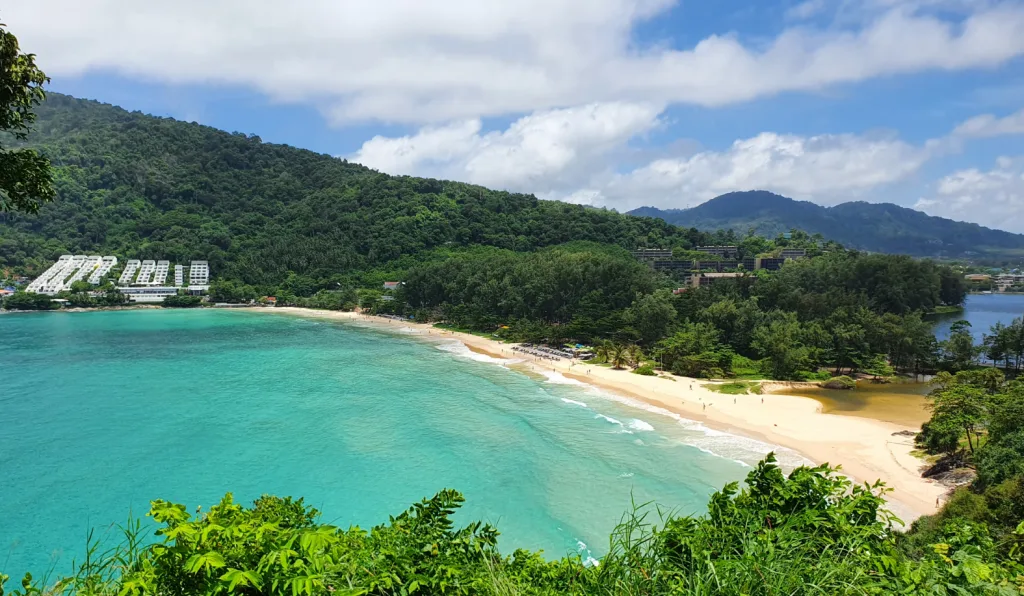
The Missing Chinese Groups
Phuket hasn’t yet recovered its biggest pre-COVID segment: Chinese package tours. In 2019 more than three million Chinese travellers visited the island. In 2024, the number was under one million (C9 Hotelworks). These groups once fed a huge ecosystem of shops, attractions, and transport services. Without them, those businesses feel the gap.
More Competition for the Same Wallets
At the same time, Phuket has seen an explosion of new businesses since the pandemic. More beach clubs, more cafés, more boutique restaurants—all chasing the same pool of tourists. Even with record spending, the pie is being sliced thinner.
Perception vs. Reality
At ground level, this creates a disconnect. If you’re in the sectors missing Chinese groups or facing new competition, it feels like tourists are spending less. But the macro data shows the opposite: spending is up, it’s just flowing toward new players, new experiences, and a different kind of tourist.
Takeaways for Business Owners
If there’s one message in the numbers, it’s this: the tourists are here, and they’re spending. But the profile of who they are and what they want has changed. For businesses, the challenge is not finding more tourists, but positioning to capture the spend that’s already happening.
Follow the Spending, Not the Headlines
It’s easy to get swept up in talk about “low numbers” or “weak spending.” The reality is different. Revenue is at record highs. If your business isn’t seeing it, the key question is why. Look at who’s coming now—Russians, Indians, a growing number of long-stay travellers—and ask whether your product speaks to them.
Adapt to the New Market Mix
- Russians often stay longer, settle in communities, and look for convenience and familiarity. Businesses that cater to them—through language, products, or services—are thriving.
- Indians tend to come in family or group formats, spending on dining, entertainment, and activities they can do together.
- Europeans and Australians still value quality food, wellness, and the “Phuket lifestyle” experience, often at premium levels.
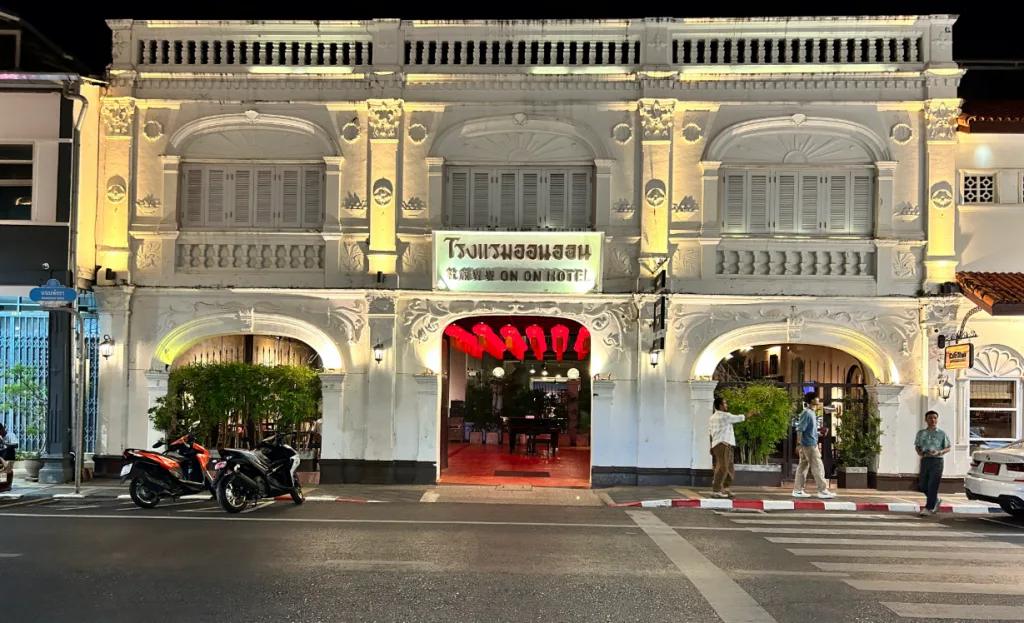
Position for Experience and Story
The tourists spending the most are chasing more than a service or product—they want an experience. Beach clubs, brunch cafés, and “Instagrammable” venues are soaking up money not just because of what they sell, but because they sell a story visitors want to take home with them. Small operators can compete here too, but it takes presentation and creativity, not just price.
Beware the Competition Crunch
With so many new entrants—from coffee shops to boutique hotels—the competition is fiercer than ever. Standing out now requires clarity: who is your market, what do you offer that’s distinctive, and how do you get in front of the right customer?
A Mindset Shift
The old model of waiting for volume tourism to flood in and feed every business is fading. Phuket is evolving into a higher-value, lifestyle-driven destination. That means opportunity is still everywhere—but it may require a mindset shift. As one local hotelier put it: “The money isn’t gone. It’s just walking into different doors.”
Conclusion – A Market That Has Changed, Not Collapsed
Phuket’s tourism market isn’t in decline. The numbers show the opposite. Arrivals are nearly back at record highs, and spending has already broken past pre-COVID levels. Hotels are charging more per night than ever. Beach clubs and lifestyle venues are booming. Brunch culture and boutique cafés are thriving where a few years ago there were none.
What has changed is who the tourists are, and where they spend their money. That shift has created winners and losers. Businesses aligned with the new market—Russians on long stays, Indians travelling in groups, lifestyle-driven Europeans and Australians—are seeing growth. Those still built around the old models of mass Chinese groups or low-spend volume tourism are struggling.
The hard truth is that it’s not about fewer tourists or less spending. It’s about adaptation. The tourists are here. They’re spending more than ever. The real question is:
Are they spending with you?

